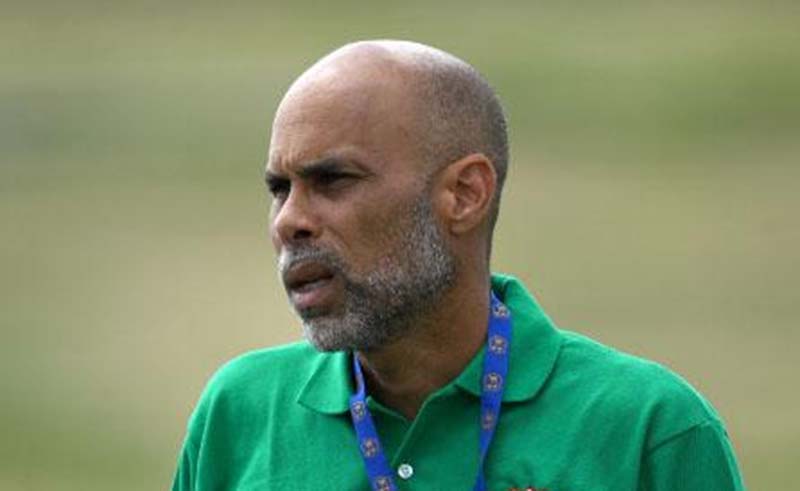(CMC) – Director of cricket, Jimmy Adams, has hinted at a worrying deficiency among West Indies batsmen in playing high quality fast bowling, and believes the solutions lie at the domestic first class level where there were not enough “hard, true” pitches to properly prepare players for the demands of international cricket.
Conceding the home side’s batsmen did “not fire at all” in the just concluded Test series against South Africa in St Lucia, Adams said there was a trend dating several years, where it appeared players were uncomfortable with concentrated fast bowling, which raised questions about not only technique but familiarity with pace.
“If I go back a couple of years when England came here [in 2019], we bowled them out for a low total in the first innings [of the first Test in Barbados] and then we had a really good innings from Jason (Holder) and I think Shane Dowrich made a hundred, which was the partnership which built our lead in that Test match,” Adams said in reference to West Indies’ historic 381-run inside four days at Kensington Oval.
“Then we won in Antigua in the next Test match and then we lost the last Test in [St Lucia]. And I remember in that last Test, and even in the Test match in Antigua where the wicket offered a bit more bounce, England played a more fast bowling centric attack in those two Tests than they did in the first Test in Barbados, where they had a world class fast bowler (Stuart Broad) with over 400 Test wickets being dropped for the first Test in favour of a left-arm swing bowler.”
Though West Indies won the Antigua Test by ten wickets, only a single batsman – Darren Bravo – managed a fifty. They lost the final Test by 232 runs, with Roston Chase the only batsman across both innings to pass fifty with an unbeaten hundred in the second innings.
Adams, a former West Indies captain, said there had been a similar occurrence on the 2017 tour of New Zealand when the Caribbean side’s batsmen struggled against the hosts’ four-pronged pace attack.
“If I go back to New Zealand four years ago, again [there is the] issue of how are we coping year in and year out against attacks that are prepared to run at us and concentrate an attack at times between waist and head, and there are times you can ask whether that particular area are we improving [on],” he pointed out.
“Are we seeing players who year in, year out are getting better in those scenarios or are they not progressing as fast as we want them to do. I think that is a question I would throw out.”
West Indies were turned over by an innings and 63 runs inside 2-½ days in the opening Test in St Lucia two weeks ago and then suffered a 158-run thrashing in just over 3-½ days in the second Test, with fast bowlers Kagiso Rabada, Anrich Nortje and Lungi Ngidi all proving a handful with their pace.
There were only two half-centuries for the home side in the series, and they managed only modest totals of 97,162, 149 and 165.
“I don’t think there is any one reason,” Adams told Starcom Radio’s Mason and Guest about the frequent batting meltdowns.
“I do think however, when I look at the conditions and the quality of the fast bowling attack from South Africa and I look at our regional cricket in terms of pitches, in terms of regional attacks, [there is a difference].
“This is not a cop out … and I’m not making an excuse for cricketers but I do think there is an urgent need to start making sure that we have consistently hard, true wickets, and start encouraging franchises to deliver – starting from youth cricket right up – to see if we can get the type of international attacks we’re likely to face from the top two, three, four, five teams in the world.
“Proper seam bowling, good fast bowlers and hard true wickets.”
He continued: “And this is not a recent thing. I go back to the time just before I left first class cricket, where the wickets had almost started to dumb-down right across the region.
“I remember playing four-day games in Barbados and even on the first day it was very sort of batting friendly to the point of being almost slow, and I’m not sure this is good preparation for when we run into teams that have the bowling attacks that India, South Africa and Australia have, even England.
“That is sort of a big picture issue. I think there would be issues that are closer to home maybe in terms of technique, I guess, but that is not my remit.”
Adams said it was not the 2-0 series loss which hurt as much as the sheer implosion of the batting lineup.
“I share the disappointment that is generally felt across the region …,” he lamented.
“It’s not so much just losing but what was disappointing for me was really seeing a batting unit not fire at all.
“[To] fall below 200 in four consecutive innings was not what we wanted to see so hopefully we can get something of a bounce back when we resume Test cricket against Pakistan over the summer.”






